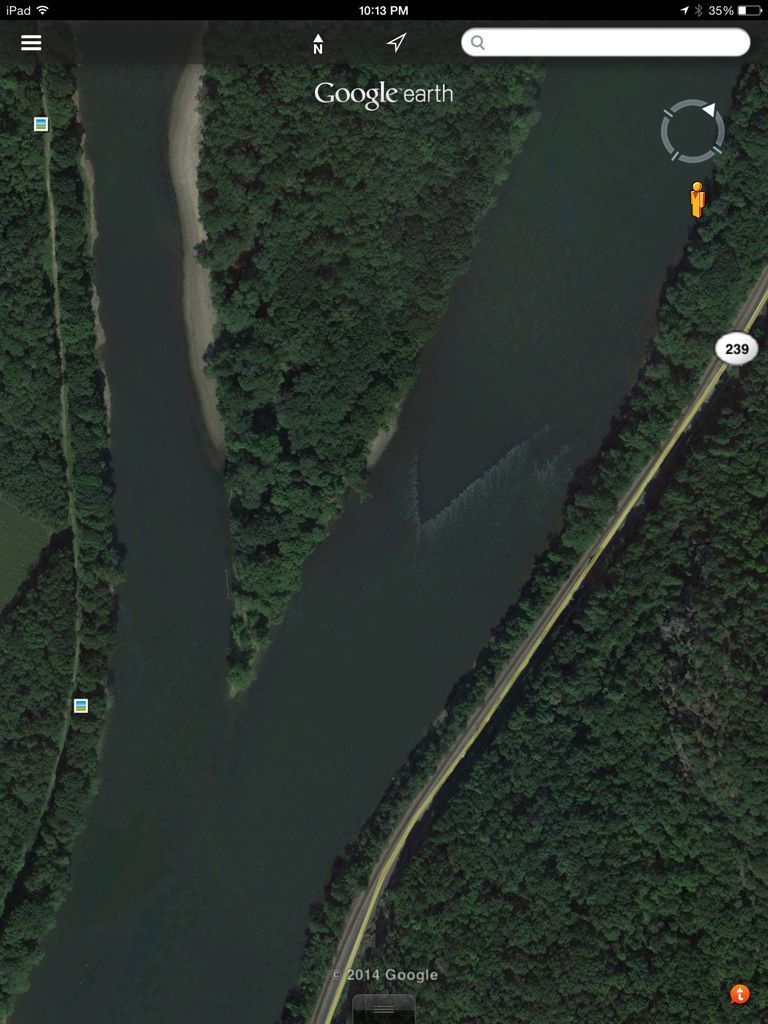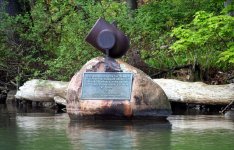Old Dude
Gold Member
- Feb 20, 2013
- 8,799
- 9,850
- 🏆 Honorable Mentions:
- 2
- Detector(s) used
- Fisher F75, Garrett ATPro, Garrett GTAx 500
- Primary Interest:
- Metal Detecting
See the "V" in this Google Earth screenshot?

These are something man has created out of necessity to take advantage of the bounty we have been given. They are eel walls or weirs. Fishing peoples worldwide have used similar structures for centuries. A trap of some sort would be placed at the point of the "V" to capture the American freshwater eel in this instance on the Susquehanna River. My fellow detecting friend and Native American enthusiast Wyoming Valley Relics tells me the indigenous peoples of this area would "herd" fish into these weirs and catch them perhaps in nets or baskets. I have read that around the turn of the 20th century, many local churches would hold eel suppers. These weirs provided the star of the meal.

These are something man has created out of necessity to take advantage of the bounty we have been given. They are eel walls or weirs. Fishing peoples worldwide have used similar structures for centuries. A trap of some sort would be placed at the point of the "V" to capture the American freshwater eel in this instance on the Susquehanna River. My fellow detecting friend and Native American enthusiast Wyoming Valley Relics tells me the indigenous peoples of this area would "herd" fish into these weirs and catch them perhaps in nets or baskets. I have read that around the turn of the 20th century, many local churches would hold eel suppers. These weirs provided the star of the meal.








